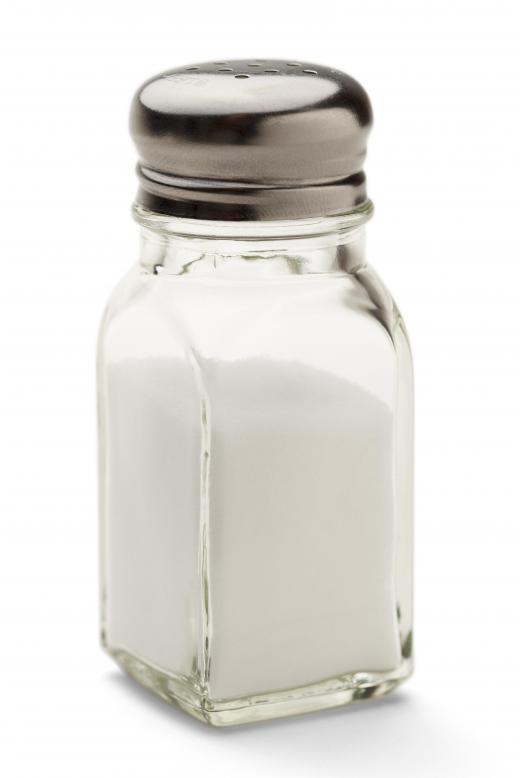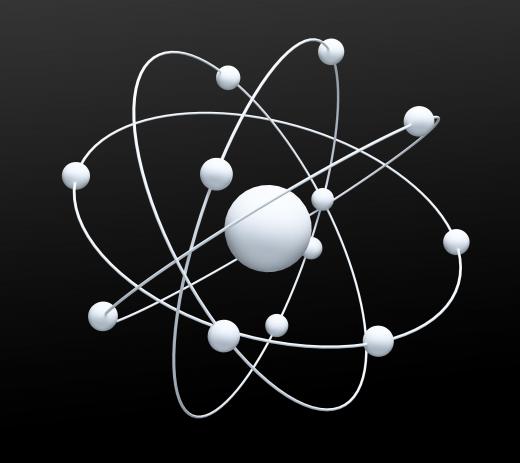What are Cations?
Cations are positively charged ions that are formed when an atom loses one or more electrons during a chemical reaction. To understand what this means, it is helpful to review some basic information about chemistry. Understanding what an atom is, something about atomic structure and properties, and then what happens during a chemical reaction all provide an important backdrop.
Everything on Earth is composed of matter, which is in turn made of atoms. Atoms are extremely tiny and can only be observed with specialized scientific equipment. All atoms are composed of three main particles: protons, neutrons, and electrons. The number of these particles in each atom is what makes elements different from each other. It also determines their chemical properties, or how atoms act under different conditions.

Protons carry a positive electrical charge, neutrons carry no charge, and electrons are negatively charged. The nucleus of the atom is made up of protons and neutrons joined together, which makes up almost all of the atom's weight. Electrons circle around the nucleus in orbitals, or energy levels. These particles are important because the way they are arranged around the nucleus determines the properties of an atom — whether it is prone to gain or lose electrons.

Atoms want to have their energy levels filled to capacity with electrons, and they will give up or take electrons from other atoms in order to do so. This is what happens during a chemical reaction. When an atom loses or gains electrons during a reaction, it becomes an ion.
A cation is formed when an atom loses electrons during a chemical reaction. It has a positive electrical charge, because it has more protons than electrons, and will be attracted to anions, which have negative charges.
Positive and negative charges attract each other, so different ions can be held together by ionic bonds and form molecules. Table salt is an example of a compound held together by an ionic bond between cations and anions. Salt is formed when positive sodium ions come together with negative chlorine ions. This compound is very stable when it is sitting on the table, but the ionic bond breaks easily when water is added. Salt dissolves in water because water breaks the ionic bond between the sodium and the chlorine.
Ions are denoted with a superscript that indicates whether the net electric charge is positive (a plus sign) or negative (a minus sign) and the number of electrons gained or lost. There are many common cations, which may be composed of one or multiple elements held together by chemical bonds. The common metals aluminum and copper are simple examples.
AS FEATURED ON:
AS FEATURED ON:












Discussion Comments
I think the correct table salt configuration is actually Sodium plus Chloride. Chlorine refers to a molecule of two Chloride atoms bonded together.
@ aplenty- There is an easy way to remembering the common cations and anions by looking at the periodic table of elements. The easiest way is to remember that atoms like to have full electron shells, so cations will have an outermost shell that is almost empty and anions will have outer shells that are almost full. Elements in group eight, all of the noble gases, are stable and do not form ions. This is because they have full outer electron shells, so they are not looking to gain or lose electrons.
Elements in group one and group two only have one or two electrons in their outermost shell so they look to lose electrons to form cations. Group one elements become +1 cations and group two elements become +2 cations.
Anions in group seven like to add one electron to become a negatively charged anion. Group six likes to gain two electrons and group five elements like to gain three electrons to form a full outer shell.
How do I remember the ions and which ones have a positive and negative charge? Is there a list of common cations and anions that I can study to learn some type of rhyme or reason to how they are organized?
Post your comments